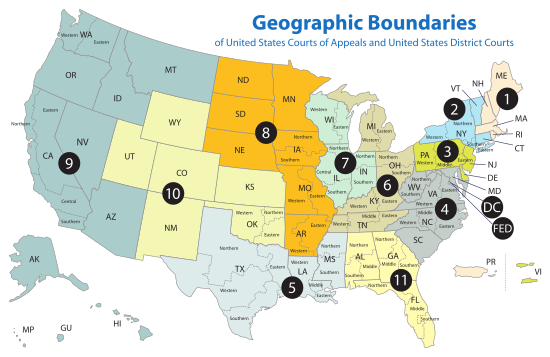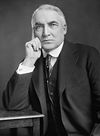
Charles Evans Hughes Sr. was an American statesman, politician, academic, and jurist who served as the 11th chief justice of the United States from 1930 to 1941. A member of the Republican Party, he previously was the 36th governor of New York (1907–1910), an associate justice of the Supreme Court (1910–1916), and 44th U.S. secretary of state (1921–1925). As the Republican nominee in the 1916 presidential election, he lost narrowly to Woodrow Wilson.
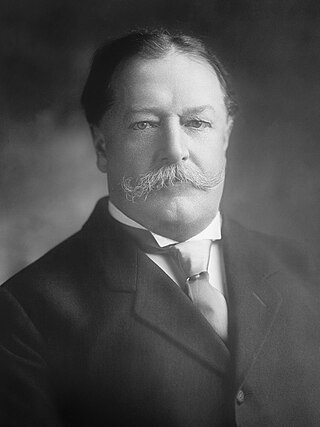
William Howard Taft was the 27th president of the United States, serving from 1909 to 1913, and the tenth chief justice of the United States, serving from 1921 to 1930, the only person to have held both offices. Taft was elected president in 1908, the chosen successor of Theodore Roosevelt, but was defeated for reelection in 1912 by Woodrow Wilson after Roosevelt split the Republican vote by running as a third-party candidate. In 1921, President Warren G. Harding appointed Taft to be chief justice, a position he held until a month before his death.

The Supreme Court of the United States is the highest-ranking judicial body in the United States. Established by Article III of the Constitution, the detailed structure of the court was laid down by the 1st United States Congress in 1789. Congress specified the Court's original and appellate jurisdiction, created 13 judicial districts, and fixed the initial size of the Supreme Court. The number of justices on the Supreme Court changed six times before settling at the present total of nine in 1869. As of June 2022, a total of 116 justices have served on the Supreme Court since 1789. Justices have life tenure, and so they serve until they die in office, resign or retire, or are impeached and removed from office.

William Rufus Day was an American diplomat and jurist who served as an associate justice of the Supreme Court of the United States from 1903 to 1922. Prior to his service on the Supreme Court, Day served as United States Secretary of State during the administration of President William McKinley. He also served as a United States circuit judge of the United States Court of Appeals for the Sixth Circuit and the United States Circuit Courts for the Sixth Circuit.
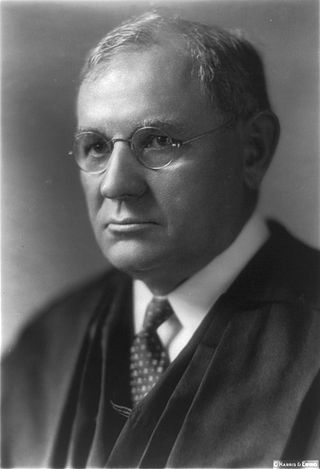
Pierce Butler was an American jurist who served as an associate justice of the Supreme Court of the United States from 1923 until his death in 1939. He was a staunch conservative and was regarded as a part of the Four Horsemen, the conservative bloc that dominated the Supreme Court during the 1930s. A devout Catholic, he was also the sole dissenter in the later case Buck v. Bell, though he did not write an opinion.

The Ohio Republican Party is the Ohio affiliate of the Republican Party. It was founded in Columbus, Ohio, in 1854.
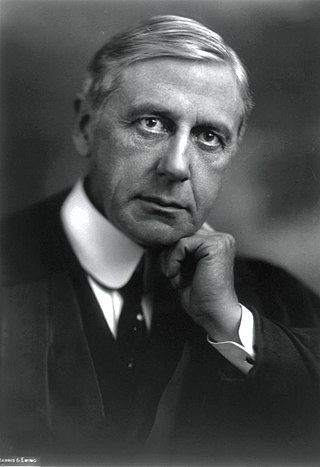
Mahlon R. Pitney IV was an American lawyer, jurist, and politician who served in the U.S. House of Representatives for two terms from 1895 to 1899. He later served as an associate justice of the U.S. Supreme Court from 1912 to 1922.
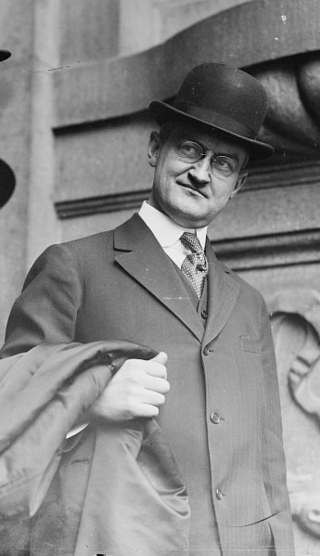
Martin Thomas Manton was a United States circuit judge of the United States Court of Appeals for the Second Circuit and previously was a United States District Judge of the United States District Court for the Southern District of New York. At his 1939 trial, Manton was acquitted of bribery, but convicted of conspiracy to obstruct justice. He served 19 months in federal prison.
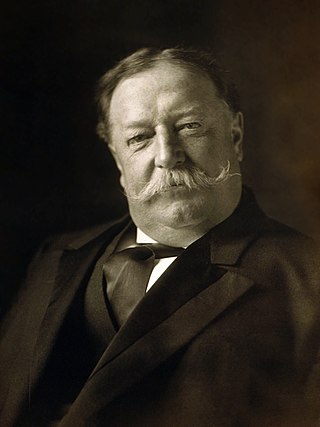
The presidency of William Howard Taft began on March 4, 1909, when William Howard Taft was inaugurated as 27th president of the United States, and ended on March 4, 1913. Taft was a Republican from Ohio. The protégé and chosen successor of President Theodore Roosevelt, he took office after easily defeating Democrat William Jennings Bryan in the 1908 presidential election. His presidency ended with his defeat in the 1912 election by Democrat Woodrow Wilson.

Willis Van Devanter was an American lawyer who served as an associate justice of the Supreme Court of the United States from 1911 to 1937. He was a staunch conservative and was regarded as a part of the Four Horsemen, the conservative bloc which dominated the Supreme Court during the 1930s.

Edward Terry Sanford was an American jurist who served as an associate justice of the Supreme Court of the United States from 1923 until his death in 1930. Prior to his nomination to the high court, Sanford served as a United States Assistant Attorney General under President Theodore Roosevelt from 1905 to 1907, and as a United States district judge of the United States District Court for the Eastern District of Tennessee and the United States District Court for the Middle District of Tennessee from 1908 to 1923. As of 2023, he is the last sitting district court judge to be elevated directly to the Supreme Court.

George Alexander Sutherland was an English-born American jurist and politician. He served as an associate justice of the U.S. Supreme Court between 1922 and 1938. As a member of the Republican Party, he also represented Utah in both houses of Congress.
During his twelve years in office, President Franklin D. Roosevelt appointed eight new members of the Supreme Court of the United States: Associate Justices Hugo Black, Stanley F. Reed, Felix Frankfurter, William O. Douglas, Frank Murphy, James F. Byrnes, Robert H. Jackson, and Wiley Blount Rutledge. Additionally, he elevated sitting Justice Harlan F. Stone to chief justice. Roosevelt's nine nominations filled eight seats on the Supreme Court because Byrnes resigned while Roosevelt was still in office. Roosevelt nominated Rutledge to the seat vacated by Byrnes.
During his only term in office, President Herbert Hoover appointed three members of the Supreme Court of the United States: Chief Justice Charles Evans Hughes, and Associate Justices Owen Roberts and Benjamin Cardozo. Additionally, with his failed nomination of John J. Parker, Hoover became the first president since Grover Cleveland to have a Supreme Court nomination rejected by the United States Senate.

The Hughes Court refers to the Supreme Court of the United States from 1930 to 1941, when Charles Evans Hughes served as Chief Justice of the United States. Hughes succeeded William Howard Taft as Chief Justice after the latter's retirement, and Hughes served as Chief Justice until his retirement, at which point Harlan Stone was nominated and confirmed as Hughes's replacement. The Supreme Court moved from its former quarters at the United States Capitol to the newly constructed Supreme Court Building during Hughes's chief-justiceship.

The Taft Court refers to the Supreme Court of the United States from 1921 to 1930, when William Howard Taft served as Chief Justice of the United States. Taft succeeded Edward Douglass White as Chief Justice after the latter's death, and Taft served as Chief Justice until his resignation, at which point Charles Evans Hughes was nominated and confirmed as Taft's replacement. Taft was also the nation's 27th president (1909–13); he is the only person to serve as both President of the United States and Chief Justice.

The White Court refers to the Supreme Court of the United States from 1910 to 1921, when Edward Douglass White served as Chief Justice of the United States. White, an associate justice since 1894, succeeded Melville Fuller as Chief Justice after the latter's death, and White served as Chief Justice until his death a decade later. He was the first sitting associate justice to be elevated to chief justice in the Court's history. He was succeeded by former president William Howard Taft.
Woodrow Wilson appointed three Associate Justices to the Supreme Court of the United States, James Clark McReynolds, Louis Brandeis, and John Hessin Clarke.


